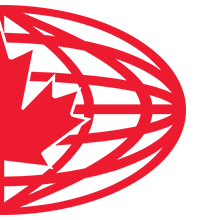After a long day at work, our enrolment staff still has one more responsibility. They have to share the questions and comments from our clients that they received during the day (and night). They usually gather in our boardroom and discuss any challenges and how we must deal with them. There are always new issues to deal with and new questions to be answered and our managers are in charge of making sure that everyone is “up to date” on today’s new items. Some are technical issues and others are “What if?” questions. We try to make sure that everyone knows everything. Impossible, of course, but this sharing of information and ideas is very powerful.
Our Medipac Assist staff has an equal opportunity to share and learn, but their debriefing is in the early morning. What happened last night? What doctors do we have to contact? What followup treatment may be required? Can we treat our client on site, or will an air or commercial evacuation be required? Are our clients in a good facility? Has the family been notified? These are really medical discussions with our doctors and nurses to ensure that a proper treatment plan is in place and that medical best practices are available and being used. These simple questions are not simple at all. There are 196 countries in the world and the medical challenges found in most of them can be daunting. For instance, the medical system in the United States is far different than in Canada. Their protocols are more invasive and the “pay to operate” system has caused distortions in proper care.
An
example or two may help. I recently had an abdominal aneurysm repair, which
entails putting a stent into in the aorta. My doctors watched the size of the aneurysm for
almost five years before operating. Apparently, when the size of the aneurysm
reaches 5 to 5.5 centimetres across, that is the optimal time to fix it. That
is when the risk of the operation itself is less than the probability of the
aneurysm bursting. Let me just state that all operations have risk and Canada’s
medical system weighs these risks against complications which may occur. It
certainly worked well in my personal situation but, when they first found it in
the United States, they treated my 3.4 aneurysm size as an emergency and wanted
to operate immediately. Thankfully, I have the resources of our Medipac Assist
medical team (and so do you) and they said to not worry about it – it can wait
until you get back. And it did! I travelled to the United States for an
additional three years before it became an “operable” aneurysm. And as an
additional benefit, by that time,they were able to do the operation
arthroscopically.
One of the major issues which we face has been the speed with which you can be put on an operating table. There is big money to be had in opening us up. Referral fees are rampant, as well. Some ambulances are paid to take you to a specific hospital and addiction referrals can be highly lucrative. This is a totally different health “care” system than what we are used to experiencing in Canada. At one point, the standard practice of assessing chest pain was to perform an angiogram. This is an invasive procedure and, in many cases, very unnecessary. Hundreds, if not thousands, of people with indigestion were subjected to a somewhat dangerous procedure to investigate for heart blockages. Just so you know, the Ottawa Heart Institute describes it as:
“A coronary angiogram is a dye test used to detect heart problems. A long, thin flexible tube called a catheter is inserted into your wrist or your groin and guided up to your heart. Once in position, a dye is injected and X-ray pictures are taken.”
Another factor to consider is that the third leading cause of death in the United States is errors committed in hospitals. It is estimated that 441,000 preventable deaths occur each year. To be fair, I believe that the U.S. has the leading technologies, the best research and some of the finest doctors in the world.
My senior staff has said that I must also tell you to call Medipac Assist at your first sign of a possible health problem, no matter how small an issue it may be. Some people have waited to call because they have high deductibles or they are worried that it might affect their premium rates (it won’t). Please use our resources – they are really your resources.
